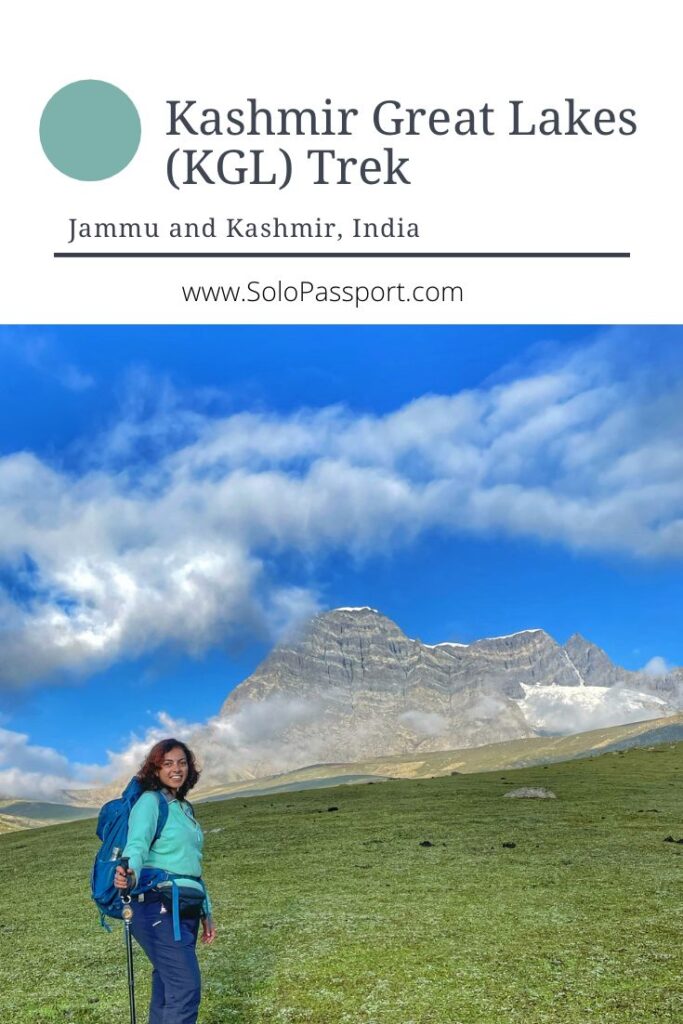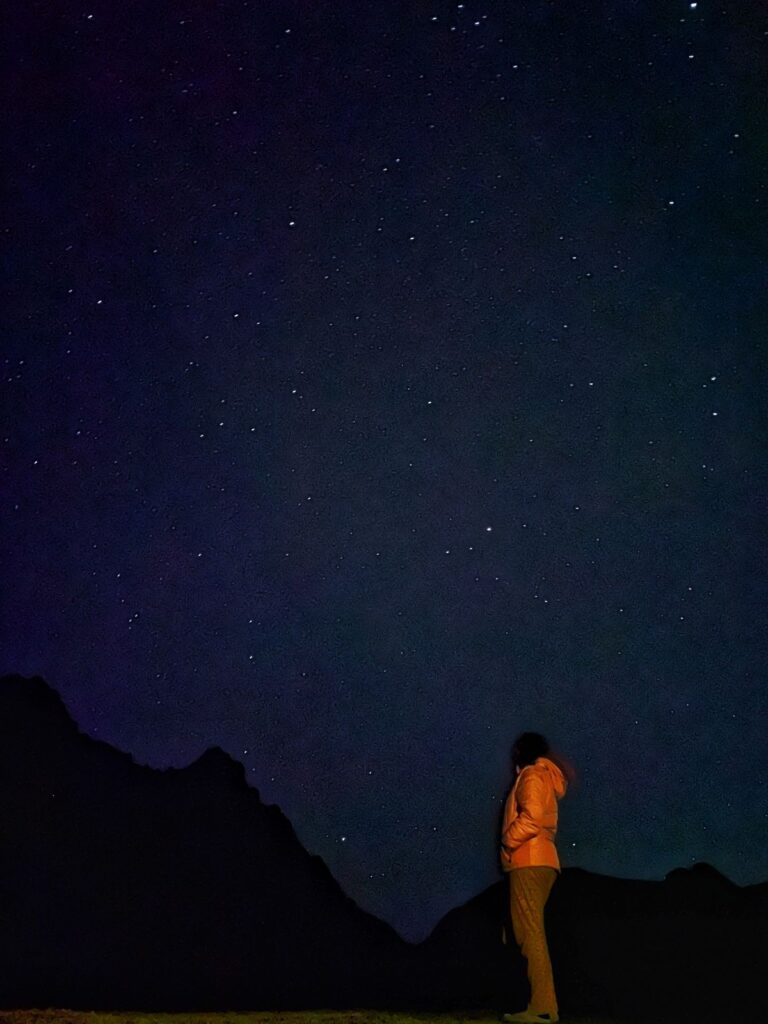Best Time To Do Kashmir Great Lakes Trek (2024)
The Kashmir Great Lakes trek is one of the most beautiful and unique treks in India. It passes through some of Kashmir’s amazing landscapes, including huge mountains, glaciers, and alpine lakes. In this post, you will find information on the best time to do the Kashmir Great Lakes trek.
Since I have lived in Australia for the last ten years, getting to the Himalayas was a very difficult and long journey. But ever since I moved my base back to Bangalore, I have decided to do at least one Himalayan trek every year. After completing the Brahmatal trek in Uttarakhand, I booked my trek to Kashmir Great Lakes (KGL).
This article may contain affiliate links, meaning if you decide to purchase via my links, I may earn a commission at no additional cost to you. For complete information, please see our affiliate disclaimer here.
Page Contents
About the Kashmir Great Lakes Trek
Also known as the Great Lakes Trek, the Kashmir Great Lakes (KGL) trek is a high-altitude trek in the Himalayas region of Jammu and Kashmir state. Of all the treks in Kashmir, such as Tarsar Marsar or Gurez Valley, the Kashmir Great Lakes trek is the most famous trek in the state. Lasting for 6 to 7 days, the trek passes through many alpine lakes.

Best time to do the Kashmir Great Lakes Trek
The trek is open only for a few months in a year, and the best time to do the Kashmir Great Lakes trek is between July and September as the weather is pleasant and not too cold. During the trek days, the days are warm, and the nights are cold.
Number of days required to do the Kashmir Great Lakes Trek
Kashmir Great Lakes Trek is a 6 to 7 days difficult high altitude trek that requires trekkers to be fit. The trail has ascends and descends that are challenging. The maximum altitude that it goes through is 13715 feet.
Preparation for the Kashmir Great Lakes Trek
You need good fitness to do the Kashmir Great Lakes Trek. As it is a high altitude and long day trek, you will need to prepare for the trek. I highly recommend doing multiple treks before you attempt this trek. If you are in South India, you can do the Kudremukha, Kodachadri or Kumara Parvatha to get a taste of a difficult trek.
Start your preparation at least 2 months in advance. You can add running, swimming, and yoga to your exercise regime. Spend at least one hour a day in building your stamina.
At India Hikes, they expect you to complete a 5-kilometre run in 30 minutes. That’s the benchmark they use to analyse whether you are fit.
Are you new to trekking or hiking? Read Beginner’s Guide to Trekking and Hiking.
Packing list for the Kashmir Great Lakes Trek
If you are offloading your backpack, you will need your daypack. Offloading is when the backpack is either carried by mules or porters (for extra cost).
If you are not offloading, your backpack is also your daypack. Try to keep the weight of your backpack between 10 and 12 kilos.
Backpack
Ensure to keep all your things in polybags (or plastic covers), so they stay dry in case of rain.
- Clothes (you can reuse most of these, so take minimal numbers):
- Dry Fit Trek pants
- Dry Fit T-shirts (full arm)
- Fleece Jacket
- Sweater
- Padded Jacket
- Undergarments
- Socks (fresh pair for each day)
- Light towel
- Woolen accessories:
- Beanie or woolen cap
- Gloves
- Scarf or Balaclava
- Woollen socks (one pair for the night)
- Slippers (to use after you reach the campsite)
- Extra battery for your head torch
- Toiletries:
- Toilet rolls (take 2 of them for seven days trek)
- Toothbrush and toothpaste
- Menstrual cups, tampons or sanitary napkins (note you will need to carry these back in zip locks to your city to discard. Do not throw them in the mountains)
- Zip locks
- Intimate powder to avoid rashes on your thighs
- Rain cover for your bag
- Thermos bottle
- Lunch box, spoon and mug
- Power bank (you get solar power banks these days, so you can get one of those too)
- Trek poles
- Trek shoes
- Medicines (consult your doctor before taking any medication):
- Personal medication, if you are taking any
- Diamox
- Paracetamol and iBrufen
- Avomine
- Digene or Pudina Hara
- Muscle Relaxant Spray
- ORS
- Knee cap
Note: Some of the gear can be rented with India Hikes and other trekking agencies for extra cost.
Daypack
If you are not offloading, then these things go into your backpack.
- Cash (around Rupees 1000 if in case you want to purchase Maggie or chai at local dhabas)
- Valid government ID (you will be asked for it at every checkpoint)
- Sun cap
- Sunglasses (ensure to take a non-expensive one)
- Poncho or rain jacket
- Head torch
- Rain cover for your bag
- Water bottle
- Lip balm
- Sunscreen
Kashmir Great Lakes trek statistics
Below are the statistics for the Kashmir Great Lakes Trek:
Total distance: Around 75 kilometres.
Number of days required: 6 days.
Grade: Difficult.
Starting point: Sonmarg or Naranag. We started at Sonmarg as the hike from Naranag is very steep and the trekking agency did not want the day 1 to be very difficult.
Finishing point: Naranag if you start from Sonmarg and Sonmarg if you start from Naranag. We ended our trek at Naranag.
Trekking agency
Kashmir Great Lakes Trek is not a very difficult trek to do solo. There are fellow trekkers along the way, and it is quite popular. But it is best to do the trek with a trekking agency as this is a remote part of Kashmir, and you need permission from the army to do the trek.
I did this trek with India Hikes and as usual I had the best time ever. Everything, including the food, was great during these 7 days. The best thing about India Hikes is their safety standards and you will feel safe at all times during the trek.
Kashmir Great Lakes Trek Brief Itinerary
Note: Some of the trekking agencies do start the trek from the other way around (Naranag to Sonmarg).
| Day | Starting Point | Finishing Point | Mode |
|---|---|---|---|
| Day 1 | Srinagar | Naranag (7800 feet) | Car/Tempo Traveler |
| Day 2 | Naranag (7800 feet) | Sonmarg (7800 feet) | Car/Tempo Traveler |
| Day 2 | Sonmarg (7800 feet) | Nichnai (11607 feet) | Trek |
| Day 3 | Nichnai (11607 feet) | Vishnusar (12011 feet) via Nichnai Pass (13229 feet) | Trek |
| Day 4 | Vishnusar (12011 feet) | Gadsar (10706 feet) via Gadsar Pass (13715 feet) | Trek |
| Day 5 | Gadsar (10706 feet) | Satsar (11985 feet) | Trek |
| Day 6 | Satsar (11985 feet) | Gangabal (11486 feet) via Zaj Pass (13276 feet) | Trek |
| Day 7 | Gangabal (11486 feet) | Naranag (7800 feet) | Trek |
| Day 7 | Naranag (7800 feet) | Srinagar | Car/Tempo Traveler |
Kashmir Great Lakes Trek Detailed Itinerary
The itinerary that we followed was:
Day 1: Srinagar to Naranag
The drive from Srinagar to Naranag is around 50 kilometres and takes up to 2 hours by road. The roads are in okay condition but prepare for windy and not-so-good roads since you are in the mountains.
Srinagar to Naranag drive: 2 Hours Drive.
Altitude at Naranag: 7800 feet.
Stay at Naranag: Tents. Beware of bears as there were some that were seen near the camping ground.
Day 2: Naranag to Sonmarg and Sonmarg to Nichnai
This is the day when the trek starts. You need to get to Sonmarg from Naranag, as the starting point of the trek is from Sonmarg. The drive from Naranag to Sonmarg is around 60 kilometres, and the journey by road takes up to 2 hours.
Once all the trekkers reach Sonmarg, the trek starts. It would be best if you trekked from Sonmarg to Nichnai. The trek is 12 kilometres long, and you will complete it in 6 to 7 hours. During the last few hours of our trek, there was heavy rain, and we also had hailstorms. This was one of the most challenging days for me.
Naranag to Sonmarg: 2 Hours Drive.
Sonmarg to Nichnai: 12 kilometres trek (6 to 7 hours).
Grade: Moderate.
Altitude change from Sonmarg to Nichnai: 7800 feet to 11607 feet.
Stay at Nichnai: Tents.
Day 3: Nichnai to Vishnusar via Nichnai Pass
On this day, you trek from Nichnai to Vishnusar via Nichnai Pass. The total distance to trek is 12 kilometres in 7 hours.
Nichnai to Vishnusar via Nichnai Pass: 12 kilometres trek (7 hours).
Grade: Difficult.
Altitude change from Nichnai to Vishnusar: 11607 feet to 12011 feet.
Altitude at Nichnai Pass: 13229 feet.
Stay at Vishnusar: Tents.
Day 4: Vishnusar to Gadsar via Gadsar Pass
You trek from Vishnusar to Gadsar via Gadsar Pass. The highest altitude that we hiked up to was 13715 feet, which was the Gadsar Pass. The total distance that you trek today is 16 kilometres in 8 hours.
Vishnusar to Gadsar via Gadsar Pass: 16 kilometres trek (8 hours).
Grade: Moderate.
Altitude change from Vishnusar to Gadsar: 12011 feet to 10706 feet.
Altitude at Gadsar Pass: 13715 feet.
Stay at Gadsar: Tents.
Day 5: Gadsar to Satsar
You trek from Gadsar to Satsar. The total distance on this day is 12 kilometres in 5 hours.
Gadsar to Satsar: 12 kilometres trek (5 hours).
Grade: Moderate.
Altitude change from Gadsar to Satsar: 10706 feet to 11985 feet.
Stay at Satsar: Tents.
Day 6: Satsar to Gangabal via Zaj Pass
On this day, you trek from Satsar to Gangabal via Zaj Pass. We pass through another pass today. The total distance is 9 kilometres in 6 hours.
Satsar to Gangabal via Zaj Pass: 9 kilometres trek (6 hours).
Grade: Difficult.
Altitude change from Satsar to Gangabal: 11985 feet to 11486 feet.
Altitude at Zaj Pass: 13276 feet.
Stay at Gangabal: Tents.
Day 7: Gangabal to Naranag, and Naranag to Srinagar
This is the last day of the trek. It is also the longest of all the days as you need to trek and drive back to Srinagar. You trek from Gangabal to Naranag. The total distance of the trek is 13 kilometres in 6 hours. After descending to Naranag, you need to drive from Naranag to Srinagar, about 2 hours drive.
Gangabal to Naranag: 13 kilometres trek (6 hours).
Grade: Difficult.
Altitude change from Gangabal to Naranag: 11486 feet to 7800 feet.
Naranag to Srinagar drive: 2 Hours Drive.
The last day was also very hard for me. It was the last day, especially because of the steep descent, and it was a never-ending descent. As my kneecap was a bit tight, I suffered a blood clot, which made my knees worse. My knees suffered the most, and I think I would need at least a few weeks to recover.
Do not forget to wear the right knee caps to protect your knees during the descends. It’s a saviour.
Accommodation and Camping
All the nights we stayed at camping tents. As this trek is in the remote and wild parts of Kashmir, be prepared for very basic and minimalistic facilities. But camping in the wild has its own charm and has spectacular views throughout the trek.

Cost and expenses
This has been one of the most asked questions about KGL. So here you go:
- Flights between Srinagar and Bangalore: INR 17,000 return.
- Trekking cost with India Hikes: INR 18,000 for seven days, including food, guide charges, stay and permits.
- Accommodation charges before and after the trek: INR 1000 per night. If you wish to stay at a house boat at Dal Lake, then it is around INR 2000 to INR 3000 per night.
- Food at dhabas, transportation between Srinagar and Naranag, and Miscellaneous expenses: INR 3000.
Total cost for doing the KGL comes up to INR 40,000 per person.
This is assuming that you have all the gear required and the total cost does not consider the offloading charges, tips, and renting the gear. Also, the expenses listed here are approximate.
Important information
- The trek requires a permit, and there were multiple checkpoints where trekkers are supposed to show a valid government ID.
- You need to drink water from natural sources. If you have low immunity, then ensure to carry the water purifier tablets.
- Mobile connectivity: None on the trail.
- You cannot carry drones into Kashmir. The drones will be confiscated immediately.
Things to look out for on the KGL trek
Just to give a glimpse of the few experiences I had during this trek:
- Walking amidst the majestic mountains in Kashmir.
- Seeing the Glaciers.
- Walking between flower fields (pink, purple and yellow).
- Getting mesmerised by the Alpine lakes.
- Braving the challenging trails with a smile.
- Hiking in the hail storm.
- Seeing a rainbow after a hard day of hike.
- Falling in love with the locals (kids, dogs, horses, mules, sheep).
- Having those wow and why moments.
- Laughing and connecting with the trek mates.
Pristine alpine lakes
There is a reason why Kashmir Great Lakes is called as that. It is because of the many alpine lakes that we see during the trek. These alpine lakes are of many different colours and each one is more beautiful than the previous one. During our trek, we saw ten pristine lakes.
- Vishnusar
- Kishansar
- Gadsar
- Satsar 1
- Satsar 2
- Satsar 3
- Satsar 4
- Satsar 5
- Nandkul
- Gangbal
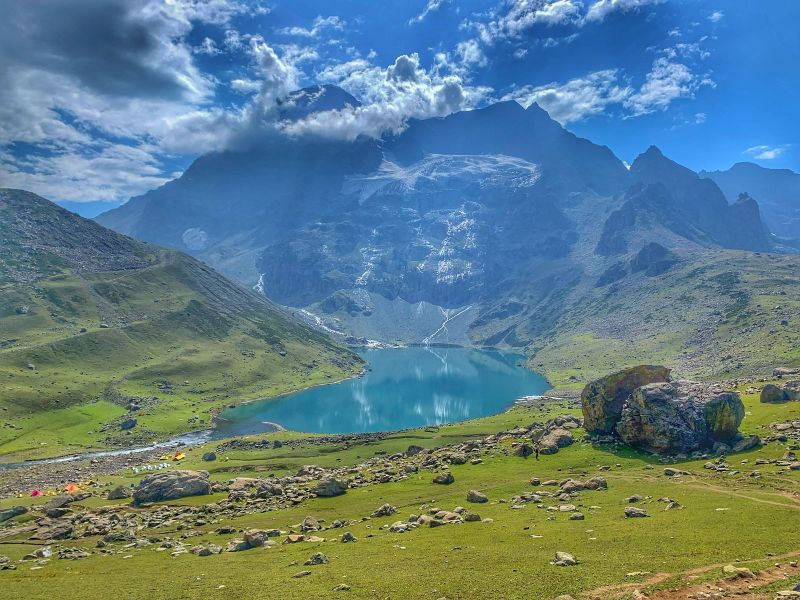
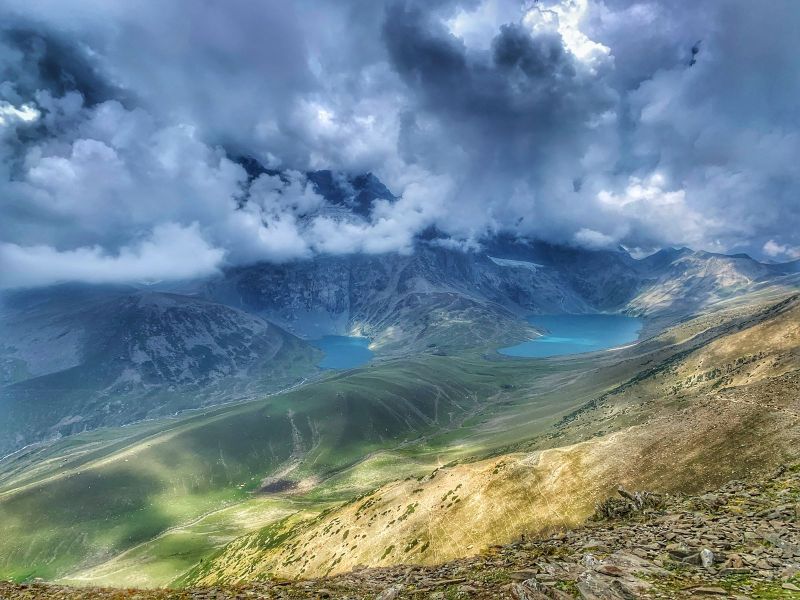

One of the main reasons why I wanted to do the KGL trek was to see these alpine lakes. I wanted to see the turquoise blue lake in India. I had seen a lot of these lakes in New Zealand (NZ) and Australia but seeing them in India was really special. The breath taking views of the lakes with the mountains in the background were totally worth to justify this challenging trek.
Breath-taking landscapes
There is no bad picture of Kashmir. Each and every corner of this trail stands out. And the landscapes are phenomenal and splendid. No wonder Kashmir is called Jannat (Heaven on Earth), as the scenes look straight out of fairytales.
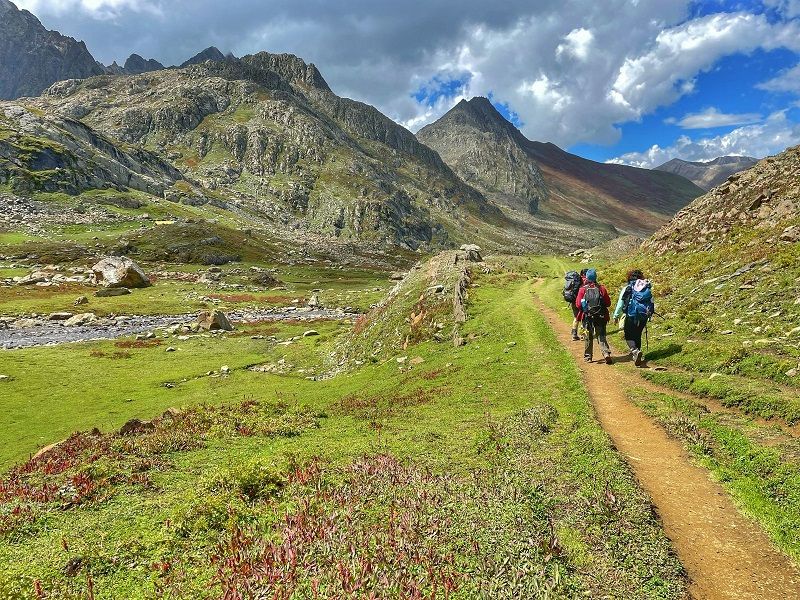
Magnificent Mount Harmukh
Standing tall at 16870 feet (5142 metres), Mount Harmukh is a sacred mountain in Hinduism. Known as the Kailash of Kashmir, Mount Harmukh is derived from Haramukuta, meaning Shiva’s diadem. On this trail, you can get a clear view of Mount Harmukh.

Starry nights with Milky Way
One of the best things about going on any Himalayan trek is seeing these starry nights (almost every night). The uninterrupted views of the stars and Milky Way form part of your life during those trek days.
Likewise, during our KGL trek, we saw so many stars and the Milky Way. They were stunning, and the feeling of seeing them is beyond words.
Beautiful locals
I am in love with Kashmiri locals. Be it kids, adults, mules, sheep, or dogs, every bit of this local culture is magical. They are friendly, and they interact with broad smiles and wagging tails.

High altitude passes
During this trail, we pass through two passes: Gadsar Pass at 13715 feet and Zaj Pass at 13276 feet. The highest altitude we reach is at Gadsar Pass.
Delicious Maggie and Kashmiri Khawa
The trail has some local dhabas where you can enjoy hot and delicious Maggie (cuppa noodles) and Kashmiri Khawa (a kind of tea). You definitely need to try them, as they taste different and are very tasty.
Ensure to carry some cash for the trail.
Flower fields
Kashmir is painted during the spring season. There are many flower fields along the way. These fields have different flowers of different colours, ranging from yellow to purple. It is too mesmerising to walk between these blankets of flowers.

Safety for solo female trekkers
Trekking is an adventurous sport requiring you to go with another buddy or a reputed trekking agency. Even though KGL can be done solo, I do not recommend going alone. It is best to be with a group for any uncalled situations.

Frequently Asked Questions (FAQ) about the Kashmir Great Lakes (KGL) Trek
Why is it called Kashmir Great Lakes (KGL)?
Kashmir Great Lakes is called that because of the number of alpine lakes you see on the trail. You will see at least ten lakes.
What should you pack for the Kashmir Great Lakes (KGL) trek?
You need a backpack and a daypack for the trail. See the Packing list section above for a list of what you need.
Do I need to own all the gear for the Kashmir Great Lakes (KGL) trek?
No, many trekking agencies, including India Hikes, rent out the gear for additional charges.
What is the best time for the Kashmir Great Lakes (KGL) trek?
The trek is open only for a few months a year, when the weather is pleasant. So, the best time to do the Kashmir Great Lakes trek is between June and the beginning of September.
What is the highest altitude the Kashmir Great Lakes (KGL) trek goes through?
The highest altitude we hiked up to was 13715 feet, the Gadsar Pass.
How many days do you need for Kashmir Great Lakes (KGL)?
You need a total of 7 days, including one day of driving from Srinagar to Naranag and acclimatising.
What is the itinerary of the Kashmir Great Lakes (KGL) trek?
- Day 1 – Srinagar to Naranag – 2 hours drive by Car/Tempo Traveler
- Day 2 – Naranag to Sonmarg – 2 hours drive by Car/Tempo Traveler
- Day 2 – Sonmarg to Nichnai- 12 kilometres trek
- Day 3 – Nichnai to Vishnusar via Nichnai Pass – 12 kilometres trek
- Day 4 – Vishnusar to Gadsar via Gadsar Pass – 16 kilometres trek
- Day 5 – Gadsar to Satsar – 12 kilometres trek
- Day 6 – Satsar to Gangabal via Zaj Pass – 9 kilometres trek
- Day 7 – Gangabal to Naranag – 13 kilometres trek
- Day 7 – Naranag to Srinagar – 2 hours drive by Car/Tempo Traveler
Do we see snow on the Kashmir Great Lakes (KGL) trek?
No, you do not see snow on the KGL trek. But you will see equally beautiful glaciers.
How many kilometres is the Kashmir Great Lakes (KGL) trek?
The total distance is 75 kilometres in 6 days.
How many kilometres do you trek every day?
You trek approximately 12 to 14 kilometres every day.
Is the Kashmir Great Lakes (KGL) trek difficult?
Yes, it is one of the most challenging treks in the Himalayas.
Which are the hardest days of the Kashmir Great Lakes (KGL) trek?
For me, the second and the last days were the hardest. But the day we had the boulders section was the hardest for some of them.
Where does the Kashmir Great Lakes (KGL) trek start and end?
The trek started at Sonmarg and ended at Naranag. But some trekking agencies start the other way, where the trek begins at Naranag and ends at Sonmarg.
Which trekking agency do I recommend?
I highly recommend India Hikes. I have gone with them, and I really like that they concentrate a lot on the safety of trekkers.
Can Kashmir Great Lakes (KGL) be done solo without a trekking agency?
Yes, KGL can be done solo, as there are many trekkers along the way. But I do not recommend this, as trekking requires that you have a buddy or a group for any unforeseen situations.
Closing Notes
While I was on the Kashmir Great Lakes trek, I experienced many emotions. These can be said to be some of the best and most rewarding days of my life. From seeing the breathtaking landscapes to giggling our way through the tough trails, this trek has taught me so much and has surely been one of my most memorable treks ever.
As I mentioned earlier, the trek is open only for few months. And this is the best time to do Kashmir Great Lakes Trek. So, do not wait and go do this amazingly beautiful trek. You will not regret!
How can you support me?
You know how much I love coffee, so you can buy me a coffee – Buy me Coffee!
Or you can purchase from one of the below travel resources without any extra charge to you:
Travel Resources
Book your flight on Skyscanner.com or Trip.com
Reserve your accommodation on Stay22
Reserve your stay at a hostel on HostelWorld
Use RentalCars or DiscoverCars for hiring self-driven cars
Book your tours and travels or purchase tickets on Viator or GetYourGuide
For a universal SIM card, use DrimSim
Buy comprehensive travel insurance on SafetyWing and WorldNomads
If you liked this article and if it was helpful in your planning or travelling, do share, tweet, or pin this post.
Follow me on Instagram | Facebook | YouTube | Twitter | LinkedIn
Do you have a question? Do you want any suggestions and tips for travel, hikes, and scuba dives? Use the Subscription box below to sign up and get updates by email.
PIN for later reference | Best time to do the Kashmir Great Lakes trek

